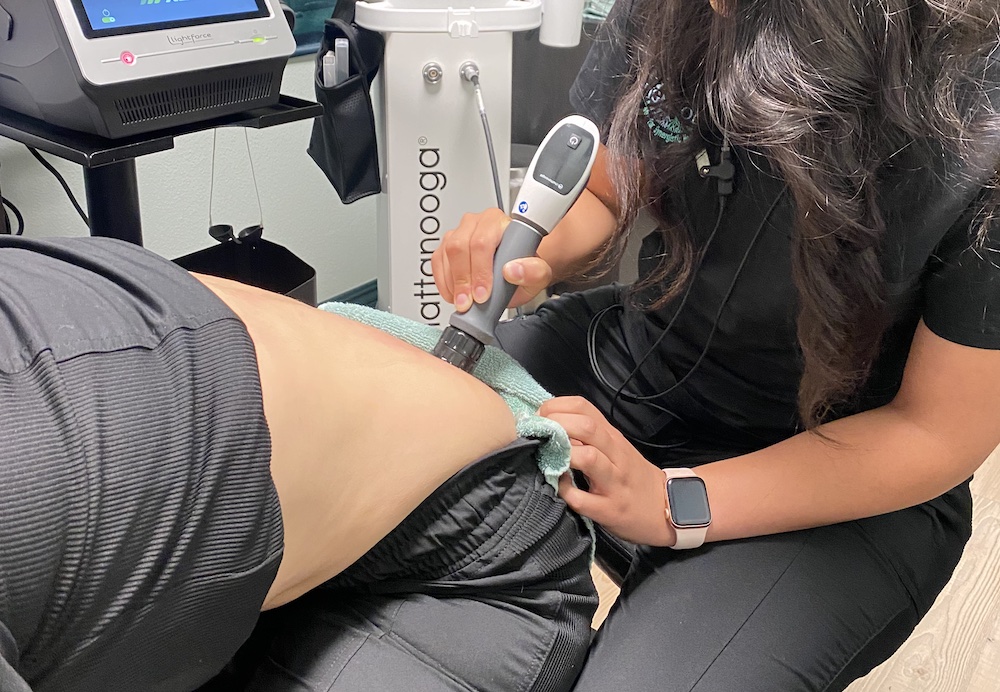As a local chiropractor, I want to share with you an often-overlooked aspect of your health: posture. Many people don't realize that maintaining proper alignment is crucial for your overall well-being. When your posture is poor, it doesn't just affect your spine; it can lead to muscle strain, chronic pain, and can even influence your mood and energy levels.
Understanding common posture mistakes is the first step toward improvement. By making a few mindful adjustments to your daily routine, you can experience significant benefits. For instance, being aware of how you sit, stand, and move can alleviate discomfort and enhance your quality of life.
Are you curious about how these simple changes can positively impact your health? Let's take a closer look at practical steps you can implement today to transform your posture and, consequently, your overall health. Together, we can work towards a healthier, happier you!
Understanding Posture and Its Importance
As a local chiropractor, I can't stress enough the importance of good posture for your overall health and well-being. It's not just about standing tall; proper posture is a fundamental aspect of how your body functions. When you align your body correctly, you create a state of balance and efficiency, which reduces strain on your muscles and joints. This alignment allows for greater freedom of movement and comfort, which many people overlook. In fact, the way you hold yourself can significantly affect your mood and energy levels.
To truly understand posture, it's essential to recognize the natural curves of your spine. These curves are vital for supporting your body weight and distributing it evenly. When you slouch or hunch, you disrupt this balance, leading to discomfort and fatigue. As a chiropractor, I often see patients who experience these issues. By actively working on your posture, you can relieve tension and prevent long-term problems that may require more intensive treatment down the line.
Good posture also plays a key role in your breathing. When your spine is properly aligned, your lungs can expand fully, allowing for better oxygen intake. This can enhance your focus and increase mental clarity, which is critical in our busy lives.
Additionally, maintaining good posture can significantly boost your confidence. When you stand tall, you not only feel better about yourself but also project an image of self-assurance to those around you. This can positively influence your interactions and open doors in both personal and professional arenas.
As your chiropractor, I encourage you to be mindful of your posture throughout the day. Small adjustments can lead to significant improvements in your overall health and quality of life. Let's work together to enhance your posture and, by extension, your well-being!
Common Posture Mistakes to Avoid
As a local chiropractor, I often see patients who are unaware of the common posture mistakes that can lead to discomfort and long-term health issues. One of the most prevalent issues is slouching, whether you're sitting at a desk or standing in line. When you slouch, your spine loses its natural curvature, which can place undue stress on your back muscles and ligaments. You mightn't notice the effects immediately, but over time, this can result in chronic pain that could be avoided with better posture.
Another frequent mistake I encounter is craning the neck forward, particularly while using mobile devices or computers. This "text neck" position puts significant strain on your cervical spine and can lead to headaches or stiffness. A simple adjustment you can make is to elevate your device to eye level, which will help maintain a more neutral neck position.
Additionally, many individuals have the habit of crossing their legs while sitting. This can misalign your hips and lower back, leading to muscle imbalances. If you find yourself sitting for long periods, it's best to keep both feet flat on the floor and your knees at a 90-degree angle to promote better alignment.
Hunching your shoulders is another common issue I observe. This posture can create tension in your neck and upper back, leading to discomfort. I encourage you to be mindful of your shoulder position—keep them relaxed and pulled back to alleviate unnecessary strain.
Lastly, don't overlook the importance of your footwear. Wearing high heels or shoes without proper support can disrupt your alignment, leading to discomfort in your back and legs. Choosing supportive footwear can make a significant difference in your overall posture and comfort.
Understanding these posture pitfalls is a crucial step toward better spinal health and overall well-being. If you have any questions about how to improve your posture or if you're experiencing discomfort, I'm here to help guide you on your journey to natural healing.
Tips for Sitting Properly
As a local chiropractor, I want to emphasize the importance of choosing the right chair and adjusting your desk height to promote a healthier sitting posture.
It's essential to select a chair that offers adequate support for your back while allowing your feet to rest flat on the ground. This proper setup not only enhances your comfort but also helps you maintain better posture throughout your day.
By being mindful of how you sit, you can significantly reduce the risk of discomfort and promote overall spinal health.
Chair Selection Importance
As a local chiropractor, I want to emphasize the significance of selecting the right chair for your daily activities, as it can have a profound effect on your posture and overall health.
A chair that's well-suited to your body can provide essential support for your spine, alleviate discomfort, and improve your concentration. Here are four key tips to help you find the ideal chair:
- Lumbar Support: Seek out a chair that offers adjustable lumbar support. This feature is crucial for maintaining the natural curve of your lower back, which can help prevent slouching and potential back pain.
- Seat Height: Ensure that the chair's height is adjustable. When seated, your feet should rest flat on the floor, and your knees should form a 90-degree angle. This positioning promotes healthy circulation and enhances your comfort.
- Seat Depth: It's important to select a chair with the right seat depth. When you sit back against the backrest, there should be a few inches of space between the back of your knees and the edge of the seat. This allows for proper leg support and reduces pressure on your thighs.
- Armrests: Choose a chair that comes with adjustable armrests. These should support your arms comfortably while allowing you to keep your elbows close to your body, which can help prevent shoulder strain and promote a relaxed posture.
By keeping these tips in mind, you can make a more informed decision when selecting a chair that will support your health and well-being.
If you have any questions about posture or how your chair choice might be affecting your body, don't hesitate to reach out for guidance!
Desk Height Adjustment
As a chiropractor, I want to emphasize the importance of desk height adjustment in maintaining good posture and overall spinal health. Many people overlook this aspect, but having a desk that's either too high or too low can lead to strain on your back, neck, and shoulders, which can exacerbate discomfort and lead to chronic issues.
To find the ideal desk height, start by sitting comfortably in your chair, ensuring that your feet are flat on the floor and your knees form a 90-degree angle. Pay attention to your elbows as well; they should also be at a 90-degree angle when your hands rest on the desk. This alignment helps to reduce stress on your musculoskeletal system.
If you're fortunate enough to have an adjustable desk, take the time to raise or lower it until you reach this optimal position. However, if your desk is fixed, don't fret—there are alternatives. Utilizing a keyboard tray or a footrest can significantly improve your alignment and comfort while working.
Additionally, it's crucial to keep your monitor at eye level. The top of your screen should be roughly at or just below eye level to help prevent neck strain.
I also encourage you to incorporate movement into your day. Taking breaks to stand or stretch every 30 minutes can help keep your muscles engaged and reduce fatigue.
Standing Techniques for Better Posture
As a chiropractor, I want to emphasize how crucial your body's alignment is for maintaining good posture while standing. Proper standing techniques not only enhance your appearance, making you look more confident, but they also significantly reduce the risk of strain and discomfort in your body.
Here are some key standing techniques that I often recommend to my patients for achieving better posture:
- Feet Position: Begin by placing your feet shoulder-width apart. This stance allows for even weight distribution across both feet, which is vital for maintaining balance and stability. It's important to avoid locking your knees; instead, keep them slightly bent. This simple adjustment can help alleviate pressure on your joints and promote better posture.
- Pelvic Alignment: Gently tuck your pelvis under while standing. This action engages your core muscles and helps align your spine correctly. You might visualize a string pulling the crown of your head upward, which encourages spinal elongation and proper posture.
- Shoulder Relaxation: Take a moment to roll your shoulders back and down, away from your ears. This movement opens up your chest and facilitates better breathing. Be mindful to avoid hunching your shoulders, as this can lead to tension and discomfort, which we often see in our practice.
- Head Position: It's important to keep your head level and aligned with your spine. Your ears should be positioned directly over your shoulders, avoiding any forward jutting. Proper alignment in this area helps prevent neck strain and fosters a more balanced posture overall.
By incorporating these standing techniques into your daily routine, you can improve not only your posture but also your overall well-being.
Remember, good posture isn't solely about aesthetics; it's about building a healthy foundation for your body. I encourage you to practice these techniques consistently, and you may be surprised by the significant improvements you notice over time.
Let's work together towards a healthier, more aligned you!
Exercises to Strengthen Postural Muscles
As a local chiropractor, I understand that many of you may not be familiar with the importance of postural health and how it directly impacts your overall well-being. Establishing proper standing techniques is vital, but to truly support your body, it's essential to incorporate exercises that strengthen your postural muscles.
By focusing on your core, back, and shoulder muscles, you can significantly enhance your posture and alleviate discomfort.
Let's start with planks. This exercise is fantastic for engaging your entire core, promoting stability and strength throughout your body. Begin by holding a plank position for about 20 to 30 seconds, and as you build strength, gradually increase the duration. If you want to add a twist, consider trying side planks. They specifically target your obliques and help improve lateral stability.
Next, I recommend incorporating wall angels into your routine. Stand with your back against a wall, positioning your feet a few inches away. Make sure to press your lower back, upper back, and head against the wall. Then, raise your arms to create a "W" shape before sliding them up to form a "Y." This movement not only strengthens your upper back and shoulders but also promotes proper shoulder alignment, which is crucial for overall posture.
Bridges are another excellent exercise to include. While lying on your back with your knees bent, lift your hips toward the ceiling and squeeze your glutes at the top. This exercise strengthens your lower back and glutes, both of which are vital for maintaining good posture and can help prevent discomfort.
Finally, don't overlook the benefits of rows using resistance bands or weights. This exercise effectively strengthens the upper back and counters the forward pull that often comes from slumping. Aim for two to three sets of 10 to 15 repetitions to see the best results.
Incorporating these exercises into your routine not only helps improve your posture but can also enhance your overall health.
As always, if you have any questions or concerns about these exercises or your posture, feel free to reach out to my office. Your health is our priority!
Mindfulness and Posture Awareness
As a chiropractor, I want to emphasize the importance of developing a strong sense of body awareness to improve your posture.
It's essential to incorporate daily posture check-ins and engage in mindful movement practices. By doing so, you can better understand how you carry yourself throughout the day.
This heightened awareness not only leads to better posture but also significantly contributes to your overall health and well-being.
Body Awareness Techniques
As your local chiropractor, I want to emphasize the vital role that body awareness plays in enhancing your posture and overall health. Many of us go through our daily routines without tuning into how our bodies feel, which can lead to discomfort and misalignment.
By incorporating specific body awareness techniques into your everyday life, you can cultivate a deeper connection with your body and naturally improve your posture.
- Mindful Breathing: Start by practicing deep, intentional breathing. This not only helps you become more aware of your ribcage and shoulders but also promotes relaxation and alleviates tension—both of which are crucial for maintaining good posture.
- Body Scanning: Make it a habit to regularly scan your body from head to toe. Pay attention to areas that feel tense or uncomfortable, and consciously relax those muscles. This practice can significantly enhance your awareness and help you make necessary posture adjustments throughout your day.
- Posture Checks: Take a moment every so often to assess your posture while sitting or standing. Ask yourself: Are your shoulders relaxed and back? Is your head aligned with your spine? These simple posture checks can lead to immediate improvements and help you develop better habits over time.
- Movement Awareness: Be mindful of how you move throughout the day, whether you're walking, lifting objects, or simply sitting at your desk. By paying attention to your movements, you can prevent strain on your body and encourage a more aligned posture.
Incorporating these techniques into your daily routine can lead to significant improvements in your posture and overall well-being.
As your chiropractor, I'm here to guide you on this journey toward better health through awareness and natural healing.
Daily Posture Check-ins
Daily posture check-ins can be a transformative practice for enhancing your overall well-being and mindfulness, especially when it comes to understanding the connection between your body and mind. As a chiropractor, I often emphasize the importance of posture in maintaining not only spinal health but also your overall physical and mental state.
To get started, I recommend setting reminders on your phone or placing sticky notes in places you frequent, like your desk or refrigerator, to remind you to check in with your posture throughout the day.
When the reminder pops up, take a moment to pause, take a deep breath, and assess how you're holding your body. Are your shoulders slumped? Is your back straight? Are you leaning forward or sitting comfortably? This simple act of observation plays a crucial role in how you carry yourself and can help prevent discomfort and pain.
Try to integrate these posture check-ins at different times during your day—whether you're sitting at your desk, standing in line, or engaged in conversation. Each time, make small adjustments to your posture and notice how these minor changes can positively influence your mood and energy levels.
With consistent practice, these daily check-ins will enhance your awareness of your posture, making it easier to maintain proper alignment. This not only promotes a healthier spine but also fosters a greater sense of well-being.
Mindful Movement Practices
Incorporating mindful movement practices into your daily routine can significantly improve your posture and overall well-being, which is essential for maintaining spinal health.
As a chiropractor, I often see the positive impact that being aware of your body has on your alignment and posture. By focusing on how you move throughout your day, you can foster a stronger connection with your body, promoting healthier posture habits.
Here are some mindful movement practices that I recommend for my patients:
- Yoga: Participating in yoga classes that focus on alignment and body awareness can be incredibly beneficial. Poses such as Mountain and Child's Pose not only help improve stability but also encourage relaxation, which is key for spinal health.
- Tai Chi: This gentle martial art involves slow, intentional movements that promote balance and mindfulness. Regular practice can help you develop better coordination and a greater sense of body awareness, which can translate to improved posture.
- Walking Meditation: Dedicate a few minutes each day to practice walking mindfully. Pay close attention to your steps, your breath, and the sensations you feel in your body. This practice allows you to make necessary adjustments to your posture as you move.
- Breath Awareness: Incorporating deep breathing exercises into your routine can help you center yourself. When you're relaxed and in tune with your breath, good posture naturally follows, which is crucial for supporting your spine.
By integrating these mindful movement practices, you can enhance your posture awareness and contribute to your overall health.
Conclusion
As a local chiropractor, I want to emphasize the importance of prioritizing better posture practices for your overall health and well-being. Many individuals may not realize that poor posture can lead to a variety of health issues, but with some simple adjustments, you can significantly improve your quality of life.
It's essential to avoid common mistakes when it comes to sitting and standing. Proper techniques can make a world of difference in how your body feels and functions. I encourage you to incorporate targeted exercises that strengthen your postural muscles, which can help support your spine and improve your alignment.
Additionally, staying mindful of your posture throughout the day is crucial. It's easy to fall into habits that may not be beneficial for your body, so regularly checking in with your posture can lead to positive changes. When you make these small adjustments, you may notice increased energy levels, an uplifted mood, and better oxygen intake—all contributing to a healthier, more vibrant life.
I invite you to start implementing these practices today and experience the difference for yourself. If you have any questions or need guidance, I'm here to help you on your journey to better health through chiropractic care and natural healing.



